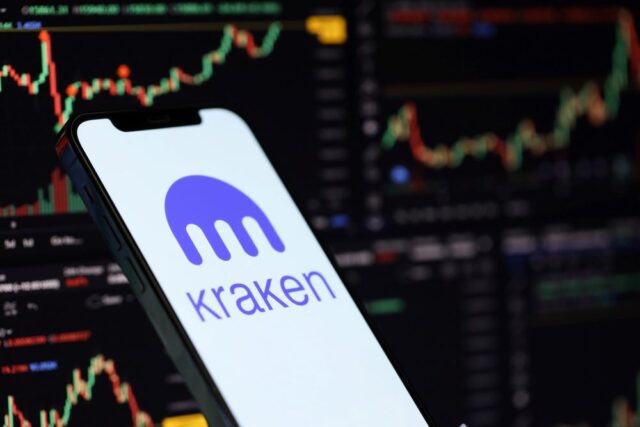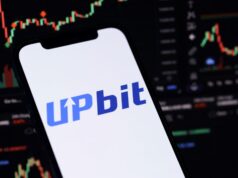Kraken co-CEO Arjun Sethi said last week that the company is “not racing to the door” when it comes to going public. The message was one of discipline: Kraken will wait for the right moment, choose timing deliberately, and prioritize clients over headlines. But only a week later, Kraken‘s IPO filing quietly entered the SEC docket. The exchange submitted a confidential S-1, entering the pipeline for a potential early-2026 listing shortly after raising $800 million at a $20 billion valuation.
Though it might seem contradictory, it’s a strategic move. A confidential S-1 filing doesn’t commit Kraken to a date. It simply gives the company a place in line during a moment when Washington is unusually aligned with crypto. Kraken is projecting patience publicly, but its actions show preparation for a narrow political and regulatory window that may not stay open for long.
What a Confidential S-1 Really Means
Filing a draft S-1 through the JOBS Act process is a quiet, flexible move. A filing for an IPO at this stage does not mean a Kraken listing is imminent. Instead, it starts the SEC review process, which typically requires months of back-and-forth comment cycles. During this time, companies can revise financials, update risk disclosures, amend valuation language, and adjust to market conditions. And they get to do so without any of it becoming public.
For Kraken, this approach aligns precisely with Sethi’s language about prudence. The confidential route allows the exchange to move early while appearing measured. If markets remain unstable or regulatory clarity shifts, Kraken can pause. If conditions improve, it can accelerate. Optionality is the whole point.

We don’t race to the door as quickly as possible
Arjun Sethi, Kraken co-CEO
The $800M Raise That Set the Stage
Kraken’s filing came immediately after completing an $800M funding round, one of the largest private raises in the industry this year. The dual-tranche structure brought in a heavyweight lineup of institutional investors: Citadel Securities, Jane Street, DRW, Oppenheimer AIM, Tribe Capital, and others. The round solidified a $20 billion valuation, just as Kraken stepped into the IPO process.
This is the type of funding base that precedes a crypto exchange IPO. Institutional investors expect governance standards, financial transparency, and readiness to access public markets. Filing soon after the round is standard procedure. It allows Kraken to incorporate updated financials into its S-1 and present a coherent capital structure to the SEC.
Washington’s Political Window: The Real Timing Signal
However, the most important backdrop to the filing isn’t the market. Washington is. The U.S. currently has the most pro-crypto policy environment in years. New market structure legislation is expected, and stablecoin rules have advanced through the GENIUS Act’s stablecoin framework. For the first time since 2021, major crypto companies see a path toward predictable, functional US crypto regulation.
This alignment may be temporary. With the 2026 midterms approaching, the political climate could shift. Investors and policy analysts describe this period as a 2026 IPO window: a moment when digital-asset companies can enter U.S. markets under clearer rules, with a supportive administration, and without the regulatory hostility of previous cycles.
Kraken’s move fits this context perfectly. Filing now ensures the company is ready if the policy environment remains favorable. At the same time, it is not obligated to proceed if conditions change.
The Market Backdrop: Volatility Returns
Strikingly, Kraken prepared its IPO filing during rising market turbulence. Bitcoin slipped back under $90,000 as Bitcoin price volatility returned, while spot ETF markets saw significant ETF outflows. Conditions like these would normally discourage a listing. But the SEC review process, not short-term price action, dictates IPO timing. Companies file during downturns so they can list during recoveries.
Kraken’s timing shows awareness that markets can shift within months. Filing now gives it the ability to go public when volatility cools or capital flows return.
Kraken’s Revenue Story: A Platform Beyond Crypto Trading
A key difference between Kraken today and in earlier cycles is diversification. The exchange now offers more than 400 crypto assets, access to U.S. stocks and ETFs for global users, and a fast-growing tokenized stock product, XStocks. Sethi highlighted that XStocks has already surpassed $10 billion in transactional volume, becoming one of the company’s strongest onboarding channels into the U.S. capital ecosystem.
This evolution positions Kraken as a global multi-asset platform, not just a trading venue. Tokenized equities, fiat access layers, and unified liquidity systems allow the company to reach consumers who previously had limited access to global financial markets. These developments support the narrative investors look for ahead of an IPO: diversification, durability, and the ability to generate revenue outside pure crypto cycles.
>>> Read more: Kraken Launches KRAK App to Rival PayPal
Regulatory Positioning: One State Short of National Coverage
Kraken operates in all U.S. states except New York, and Sethi expressed optimism that new market structure rules would trigger a surge of innovation. This stance aligns tightly with U.S. policymakers’ current push for regulatory clarity in digital asset markets. If these rules take shape before the election cycle tightens, companies like Kraken gain a rare window for a U.S. listing.
The political momentum matters. It determines how investors price risk, how regulators evaluate filings, and how public markets perceive crypto infrastructure companies. Filing early allows Kraken to benefit from stability that may not last.
Reconciling “We’re Not Racing” With the Filing
The tension between Sethi’s comments and the timing of the Kraken IPO filing is not a contradiction. It is just standard IPO communication. CEOs consistently show patience to avoid appearing opportunistic or desperate. They reassure clients, manage valuation expectations, and keep market psychology grounded.
Internally, however, companies prepare early. Filing quietly preserves optionality, especially during a favorable political climate. Kraken wants readiness, not urgency.
What Happens Next: The Road Toward 2026
With the IPO filing submitted, Kraken now enters the SEC comment cycle. The process can include multiple amendments, updated financial reporting, and internal governance adjustments. If conditions align, a listing could be viable during the 2026 IPO window, when U.S. regulatory clarity and market sentiment may be most favorable.
External factors will shape the timeline: ETF flows, crypto market recovery, macro-economic volatility, and developments in US listing requirements. Kraken has positioned itself to adapt to any of these outcomes.
>>> Read more: Kraken Launches Ink Blockchain Ahead of Schedule
Kraken insists it is not rushing. And publicly, that remains true. But the confidential filing shows a company that understands the importance of timing. The political climate, regulatory clarity, and institutional investor backing create a moment that may not repeat anytime soon. Kraken is not committing to an IPO. It is preparing for the possibility.
The calm tone is intentional. The timing is strategic.
Readers’ frequently asked questions
Does Kraken need regulatory approval from all U.S. states before it can go public?
No. A company can list on a U.S. stock exchange even if its services aren’t available in every state. IPO eligibility is determined by federal securities law, not state-level licensing. Kraken can proceed with an IPO even while remaining unavailable in New York.
Does filing a confidential S-1 require Kraken to choose an exchange like Nasdaq or NYSE now?
No. Companies are not required to select a stock exchange at the confidential filing stage. The choice between Nasdaq and NYSE is usually finalized later in the process, often closer to the public S-1 release, when the company’s underwriters and internal team evaluate liquidity needs and market positioning.
Will Kraken’s tokenized stock product (XStocks) be available to U.S. investors after an IPO?
An IPO does not change the regulatory status of XStocks. The product is unavailable in the United States because it relies on tokenized exposure to equities, which U.S. securities rules currently restrict. Unless regulations change, an IPO will not make XStocks accessible to U.S. users.
What is in it for you? Action items you might want to consider
Track SEC comment-cycle updates for Kraken’s filing
Investors and analysts can monitor when the confidential S-1 transitions to a public version, which is the strongest signal that Kraken is moving toward an actual listing window.
Watch for U.S. legislative movement on market-structure rules
Changes to federal crypto regulation, particularly around stablecoins and market structure, will materially influence Kraken’s IPO timing and valuation environment.
Evaluate the impact of Kraken’s diversification on potential equity value
Kraken’s expansion into tokenized equities, U.S. stock access for global users, and multi-asset trading may affect long-term revenue projections and how public markets value the business.
Kraken (KRAK.PVT) co-CEO Arjun Sethi speaks to Julie Hyman at Yahoo Finance Invest.










